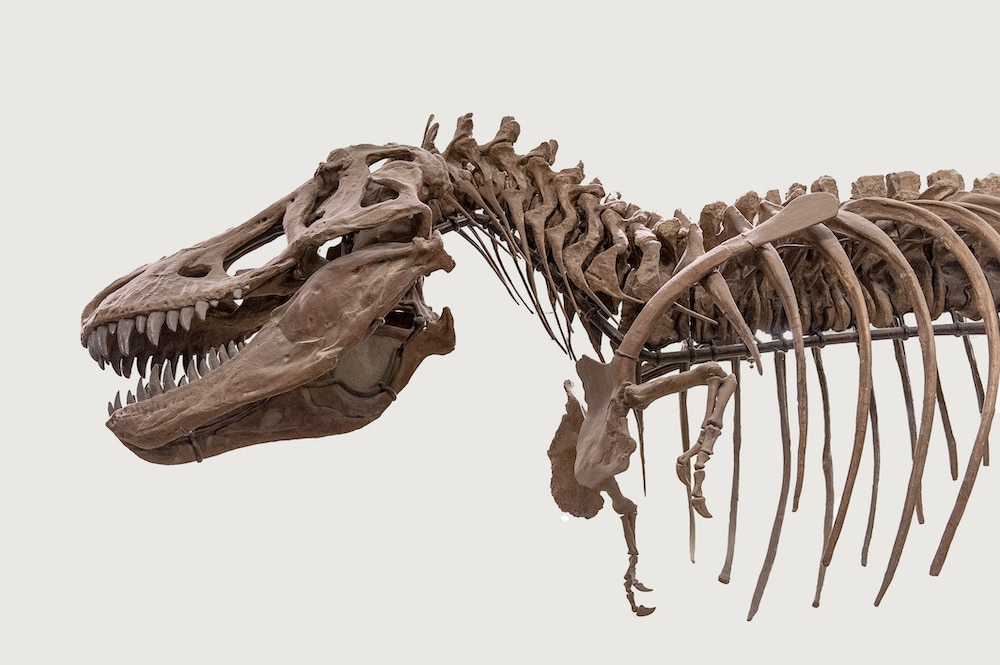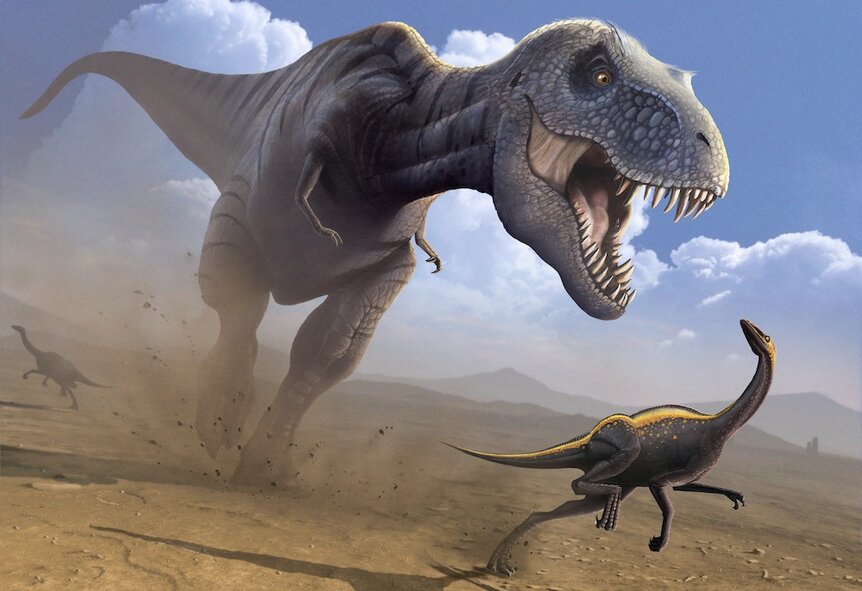Create a free profile to get unlimited access to exclusive videos, sweepstakes, and more!
Did T-rex arms shrink to avoid becoming finger foods?
Tyrannosaurs rex arms might have adapted to avoid being eaten by other T-rexes.

For decades the Tyrannosaurs rex has been the mascot of all dinosaurs, and for good reason. They’re the most famous of the late Cretaceous therapod dinosaurs, apex predators of their time. Their appearance on the landscape would have stricken as much fear into the hearts of their contemporaries as they did viewers of Jurassic Park.
Perhaps their most famous feature — the subject of jokes and memes — are their seemingly useless and stubby arms. Paleontologists have debated the purpose of those arms, dreaming up countless hypotheses to explain away their diminutive size as having some adaptive benefit. Ideas range from grabbing prey to holding onto mates, but all of those activities would be better served by larger arms, so the mystery has remained.
A recent paper published in the journal Acta Palaeontologica Polonica suggests a new explanation. In short, instead of evolving to do something useful, the arms of T. rex might have adapted to avoid being eaten by other rexes.
There’s evidence that T. rex participated in group feeding events, where several individuals would descend on a single carcass to eat together. While that sounds like a happy family sitting around the table together, it might have been highly competitive, with the potential for intentional or unintentional injury.
We see similar behaviors in some modern animals. A video which made the rounds across the internet in 2015 shows a crocodile clamping onto the arm of another croc, rolling, and removing the arm. The incident occurred during feeding so it’s unclear if the animal intentionally ate the limb of one of its peers or if it was a result of accidental friendly fire.
If similar events happened with groups of T. rex during communal feeding, especially if they were common, then there would have been a selective pressure to reduce the size of the forelimbs to avoid damage.
Ancestors of T. rex and other tyrannosaurids had larger arms, so there’s a clear evolution in the fossil record showing that some selective pressure pushed tyrannosaurid forelimbs to shrink. Risk of injury is a pretty effective pressure, particularly if the benefits of longer arms are minimal.
The adaptive pressure resulting from the consequences of bite wounds might have overridden any advantage present from having longer arms. Bite wounds cause trauma which can lead to infection, shock, and death. The idea is that T. rex arms became a liability the animal could no longer afford, so they learned to live without them.
While this explanation for the relatively small size of tyrannosaurid arms is enticing, it runs up against some of the same problems as other explanations, namely the inability for us to test it directly. However, we may be able to find indirect supporting evidence in the fossil record.
There’s a famous, possibly apocryphal story involving bullet hole statistics in World War II airplanes. War planes would return from the battlefield riddled with holes, and the leadership was tasked with figuring out how to reduce their losses. The initial idea was to protect the areas where bullet holes were most common. Supposedly, mathematician Abraham Wald flipped the script, suggesting that areas with the fewest bullet holes were the most vulnerable. After all, planes struck in those areas wouldn’t come back. It's an interesting lesson in survivorship bias but it has some utility in examining T. rex fossils as well.
Bite marks from other T. rexes aren’t uncommon in the fossil record. If an analysis of fossils shows a reduced number of bites on and around the forelimbs, as compared to other areas on the body, that might suggest that shortening of the limbs was a successful evolutionary survival strategy.
Much like the World War II planes, animals with arms long enough to be severed don’t survive the war of evolution. Natural selection is a constant cost-benefit analysis and, when it comes to T. rexes, an arm or a leg is too high a cost.



























